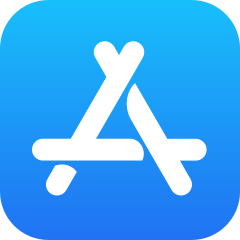With iFlow, you can manage leaves efficiently due to the feature that allows you to add events and the reports that you can easily filter. Read this article to find out everything about the leaves in iFlow, how to add leaves, how to create personalized leaves, and which are the reports you can generate.
Which are the types of leaves in iFlow?
In iFlow, there are 2 types of leaves: sick leave and paid leaves, which is divided into paid leave from annual leave and extraordinary leave.
Sick leave
You can add this type of leave as an event in iFlow.
How do you add it:
- Click on Add events -> Sick leave -> Select the employee -> Select the time interval -> Add
You can find the sick leave in the Medical days and Timesheet report. In the “Medical days” report, you will see the number of days each employee has been in sick leave and the total number of sick leave days paid by the company. The report can be filtered by teams or periods.
In the Timesheet report, you can notice the sick leave by its symbol, specially chosen for the medical days.
Paid leave
Paid leaves in iFlow are divided into two categories, paid leave from the annual days and paid extraordinary leave. These two types function similarly. Follow these steps to add a paid leave:
- Click on “Add events” -> “Paid leave” -> Select the employee -> Select the time interval -> Add
You can keep track of the leaves easily. The app lets you add the leaves from the previous years. The employees will be able to see the number of days they have left from the past year. As an administrator in iFlow, you can view everyone’s leaves either in the Paid leaves report either on the employee’s profile.
How do you assign the annual paid leave?
On the profile of each employee, you have the option to add paid leave days for the current year and past years. Access the profile of the employee, click on Add (from the Paid leave days heading) -> Select the type of paid leave from the list -> Select the year -> Complete the number of days -> to save, click on Add.
Paid extraordinary leave
In certain circumstances, employees become entitled to extraordinary leave, to they can take at the time when the situation in question arises. These circumstances include marriage, death of a spouse, a first-degree relative by blood or by marriage, moving house, birth of a child, marriage of a child, etc. This type of paid leave needs to be added individually on each employee’s profile, following the steps from above, but you need to select the kind of paid leave that is fitting for your situation. Read here how to create different types of paid leaves, how to allocate them to employees, and how to add them as an event.
Paid leave requests
In iFlow, you can find predefined requests for paid leave, but if your company uses a customized template, you can create it in the app and link it to an event. With these options, when you add a paid leave, the request is filled in with the data automatically. After you generate the document, you can print or download it. You can find the steps about how to create a document and how to link it to an event here.
Where can I view the paid leaves?
In iFlow there are 3 places where you can visualize details regarding the paid leaves:
- On the employee’s profile
- In the Paid leaves report
- In the Timesheet report
But please note that only the administrator has access to all of these, the user, as a team member, can see them only if he has permission to access the reports. Without this permission, an employee can only view the information from his profile.
In the employee’s profile, both the administrator and employee can see the total number of paid leave days he has or used.
In the Paid leave Report you can view the total of paid leaves, for all the employees. You can filter the data from the report by years, teams, or the name of the employee.
In the Timesheet Report, the leaves appear after they are added as events and approved (if this is the case). You can change the way they are listed (symbol or color) as you prefer.
If you need a type of paid leave that does not exist in the app, you can create it. For example, for unpaid leave, you can create a new event called “Unpaid leave”.
Note: The event “Unpaid leave” can’t be created as a type of leave because then you will need to allocate a number of days to the employee. You need to create it as an event for it to work correctly. Read here how to create events.
How do you manage your employees? If you don’t already have an account, create one and try iFlow, your complete time and attendance solution. Discover digital reports that will help you in managing your employees.




